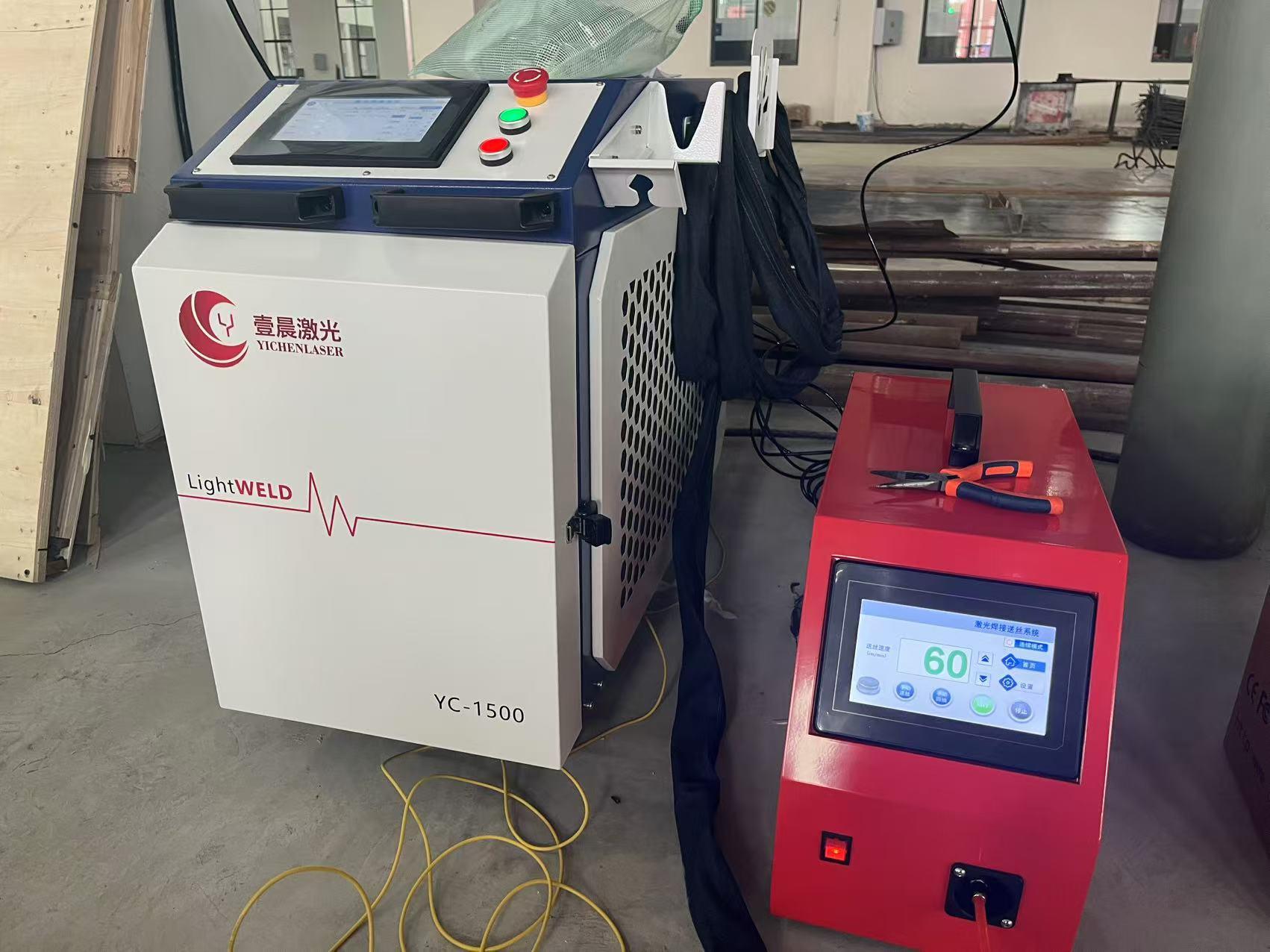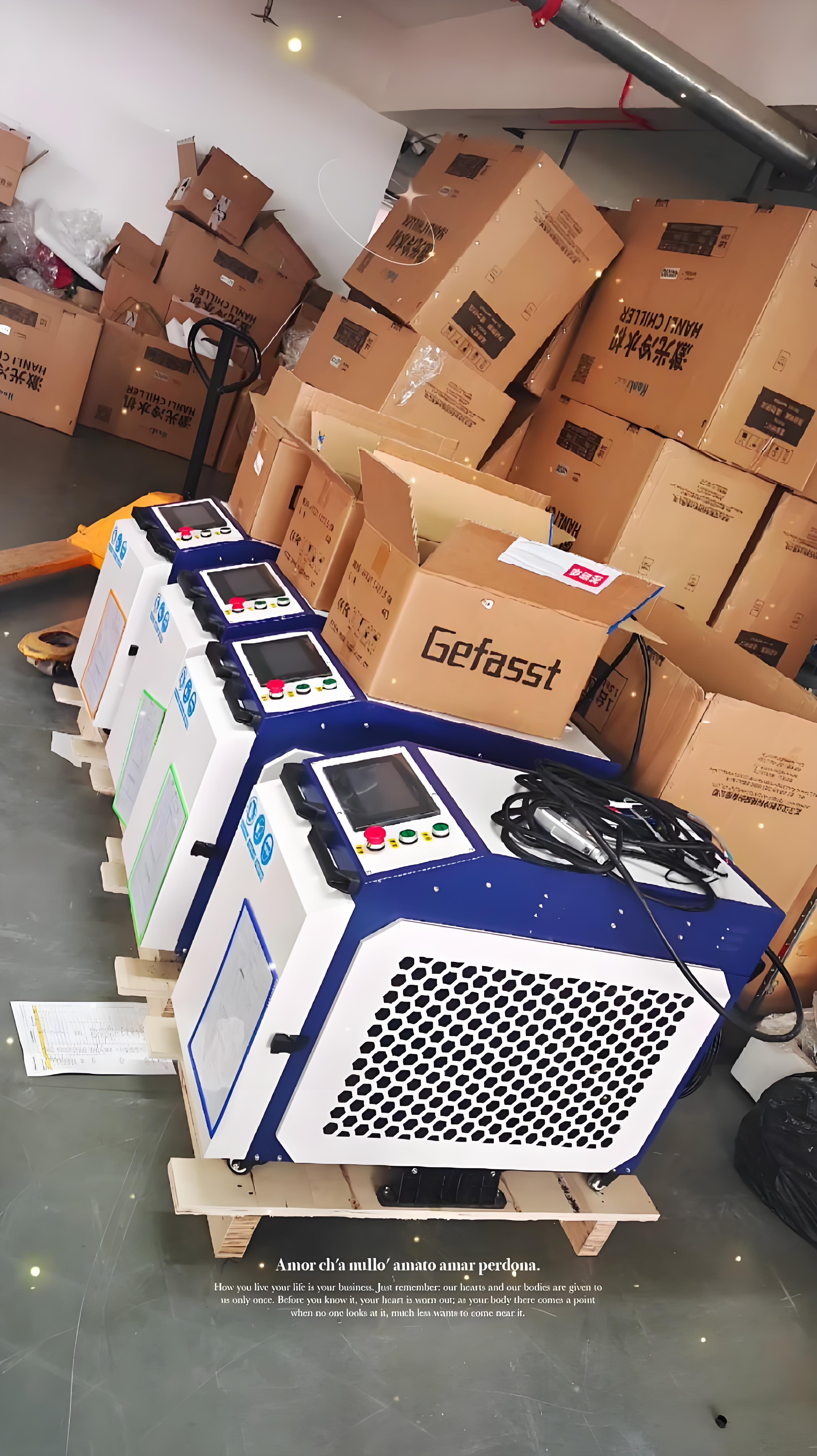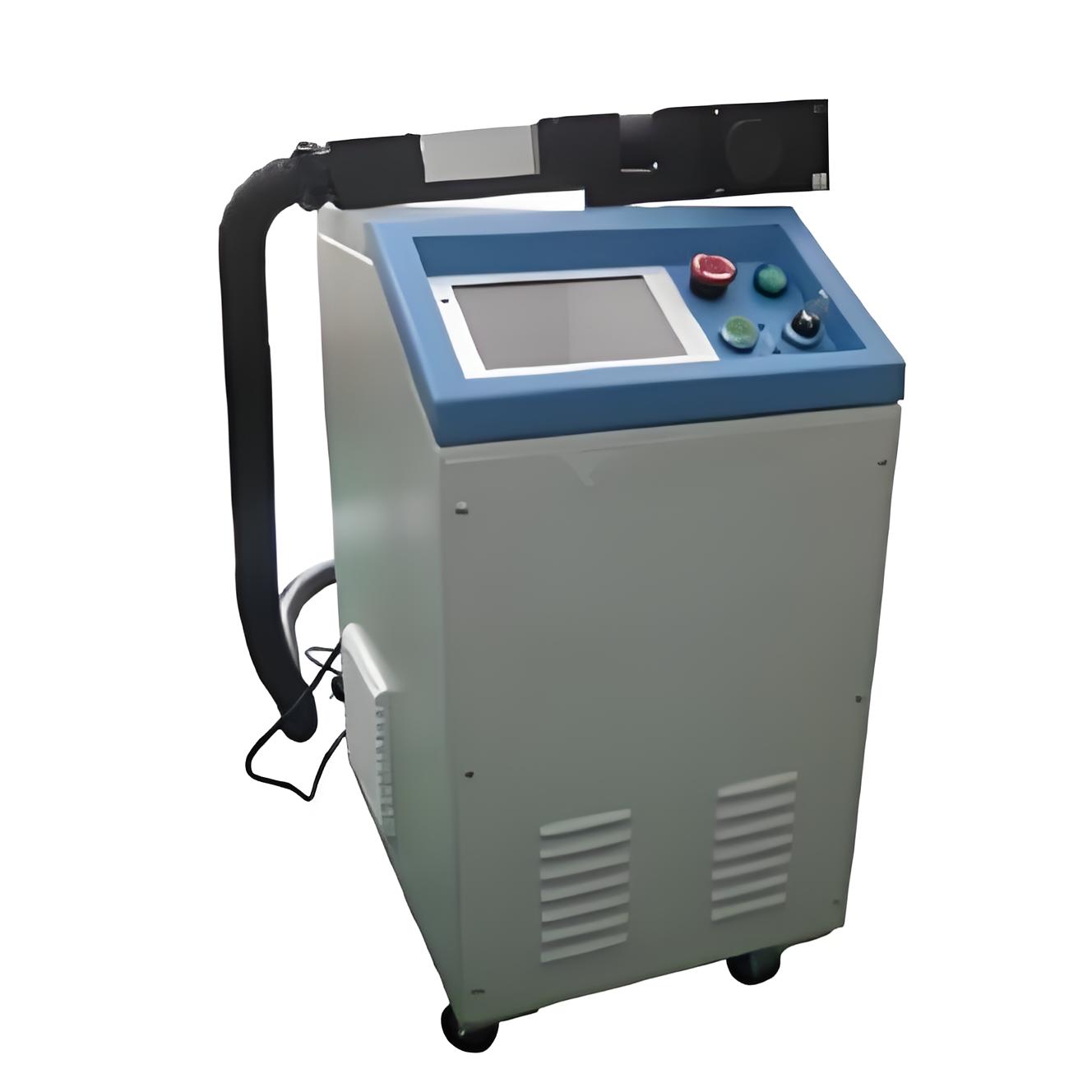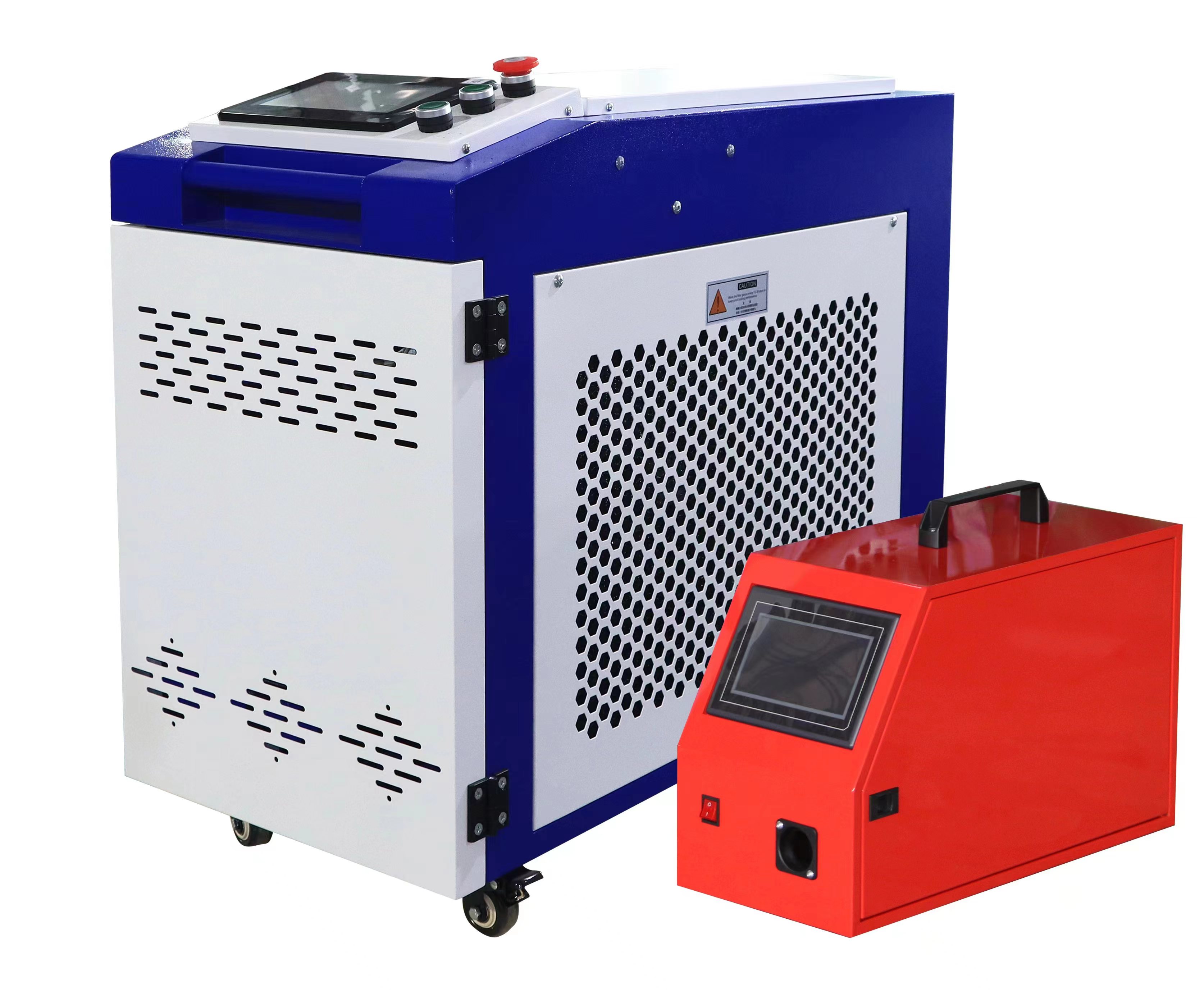As someone who’s been immersed in the world of industrial cleaning technologies for over a decade, I’ve had the privilege of working with laser rust removal machines across various industries, from automotive repair shops to aerospace manufacturing. These machines are celebrated for their precision and eco-friendly approach, but one question I often hear from clients and curious newcomers alike is: Will a laser rust removal machine cause sparks? It’s a valid concern, especially for those working in environments where fire safety is paramount. Drawing from my hands-on experience and technical knowledge, I’ll dive deep into this topic, exploring how laser rust removal works, whether sparks are a real risk, and how to use these machines safely. My goal is to provide you with clear, practical insights to confidently navigate this powerful technology.

How Laser Rust Removal Works: Setting the Stage
To understand whether laser rust removal machines produce sparks, we need to first grasp the mechanics behind them. Laser rust removal, or laser ablation, involves directing a high-energy laser beam at a surface to remove rust, paint, oxides, or other contaminants. Here’s a quick breakdown of the process:
Energy Delivery: The laser beam delivers focused energy to the contaminant, heating it to the point of vaporization or sublimation (turning it directly into gas).
Selective Action: The laser targets only the unwanted material (e.g., rust) while leaving the underlying substrate (like steel or aluminum) largely unaffected.
Non-Contact Process: Unlike grinding or sandblasting, the laser doesn’t physically touch the surface, eliminating mechanical friction.
This non-contact nature is key to answering the spark question, but before we get there, let’s address why sparks are a concern. In environments like oil and gas facilities, automotive workshops, or anywhere with flammable materials, sparks can ignite vapors, dust, or gases, posing a serious safety hazard. So, does laser cleaning introduce this risk? Let’s find out.
Do Laser Rust Removal Machines Produce Sparks?
The short answer: No, laser rust removal machines typically do not produce sparks in the traditional sense.
Unlike abrasive methods (e.g., grinding or sandblasting), which create sparks by physically striking the surface and generating friction, laser cleaning relies on light energy. When the laser beam hits rust, it vaporizes the material, producing a small plume of vapor or fine particles rather than the incandescent metal fragments we associate with sparks. However, there are nuances to consider, and I’ve seen situations where misunderstandings about the process led to safety concerns. Let’s break it down:
Why Lasers Don’t Typically Cause Sparks
No Mechanical Friction: Sparks from grinding occur because metal particles are forcibly dislodged and heated by friction. Lasers, being non-contact, avoid this entirely.
Controlled Energy: The laser’s energy is absorbed primarily by the rust, which has a lower vaporization point than the base metal, minimizing the chance of igniting metal particles.
Minimal Heat Spread: Pulsed lasers, commonly used for rust removal, deliver energy in short bursts, limiting heat buildup in the substrate that could theoretically create hot spots.
My Experience: I once worked with a shipyard client using a 100W pulsed fiber laser to clean rust from steel hulls. They were worried about sparks near fuel storage areas. After demonstrating the process, we confirmed no sparks were produced—just a faint vapor plume that dissipated quickly. The client was relieved, and the laser became their go-to cleaning method.

Situations Where Spark-Like Effects Might Occur
While true sparks are rare, certain conditions can create effects that might be mistaken for sparks:
Reflective Surfaces: Highly polished metals (e.g., aluminum or stainless steel) can reflect the laser beam, causing small flashes of light that look like sparks but aren’t incandescent particles.
Thick Contaminants: Heavy rust or paint layers may produce small glowing particles as they vaporize, especially if the laser power is too high. These are not true sparks and typically don’t pose an ignition risk.
Improper Settings: Excessive power or incorrect focus can overheat the substrate, potentially creating tiny hot spots. These are rare and avoidable with proper calibration.
Case Study: In a factory cleaning rusted steel molds, an operator using a high-power continuous wave laser (500W) noticed brief flashes when cleaning thick rust. Adjusting to a lower-power pulsed laser (100W) eliminated the effect, proving the importance of matching settings to the task.
Factors Influencing Spark Risk
To fully answer whether laser rust removal machines cause sparks, we need to consider several factors that affect the process:
1. Laser Type
There are two primary types of lasers used for rust removal:
Pulsed Lasers: Deliver energy in short pulses, ideal for precision cleaning with minimal heat transfer. These are less likely to produce spark-like effects.
Continuous Wave Lasers: Emit a steady beam, generating more heat and potentially causing glowing particles with thick contaminants.
My Tip: For environments where fire safety is critical, use a pulsed fiber laser (20-200W) to minimize heat and vaporization effects.

2. Material and Contaminant
The substrate and contaminant type influence the cleaning process:
Metals: Steel, aluminum, and titanium absorb laser energy predictably, with rust vaporizing cleanly.
Non-Metals: Plastics or composites may melt or produce fumes, though sparks are still unlikely.
Thick Rust or Paint: Heavy layers may create more vapor or glowing particles, but these are not true sparks.
Example: I cleaned a rusted steel gear with a pulsed laser, and the rust turned to vapor with no visible sparks. On a painted aluminum part, however, the paint produced a slight glow during removal, which an untrained observer might mistake for a spark.
3. Machine Settings
Proper calibration is crucial:
Power: Lower settings (20-100W) are safer for delicate or flammable environments.
Pulse Frequency: Higher frequencies (50-100 kHz) produce smoother cleaning with less heat buildup.
Beam Focus: A properly focused beam targets only the contaminant, reducing substrate heating.
My Story: A client in an automotive shop used a laser with overly high power (300W) on a steel frame, noticing tiny glowing flecks. Reducing the power to 50W and increasing the frequency eliminated the issue, proving that settings make all the difference.
4. Environmental Conditions
In flammable environments (e.g., near fuel vapors or dust), even minor effects like vapor plumes need careful management:
Ensure proper ventilation to disperse vapors.
Use laser machines with built-in fume extractors.
Avoid cleaning near open flames or highly flammable materials.

Safety Measures to Minimize Risks
While laser rust removal doesn’t produce sparks in the traditional sense, safety is still paramount. Here’s how to ensure safe operation:
1. Use Appropriate Laser Settings
Start with low power and high frequency for initial tests.
Adjust the beam focus to target only the contaminant layer.
Use pulsed lasers for sensitive or flammable environments.
2. Implement Ventilation and Fume Extraction
Install a fume extractor to capture vaporized particles.
Work in a well-ventilated area to prevent vapor accumulation.
Wear a respirator if working in confined spaces with heavy rust.
3. Wear Proper Protective Gear
Laser Safety Glasses: Essential to protect against reflected laser light.
Gloves and Protective Clothing: Prevent skin exposure to laser reflections or hot surfaces.
Fire-Resistant Gear: In high-risk environments, use flame-retardant clothing.
4. Assess the Environment
Clear flammable materials (e.g., oil, gasoline, dust) from the work area.
Use fire-resistant barriers or shields if cleaning near flammable substances.
Have a fire extinguisher (Class D for metal fires) nearby as a precaution.
My Experience: In a petrochemical plant, we used a 100W pulsed laser to clean rusted valves. By setting up a fume extractor and clearing flammable liquids, we ensured zero risk, even in a high-hazard environment.

Comparison of Cleaning Methods and Spark Risk
To put laser cleaning in perspective, here’s how it compares to other methods:
| Method | Spark Risk | Safety Concerns | Suitability for Flammable Environments |
|---|---|---|---|
| Laser Cleaning | None to minimal | Vapor plumes, laser reflections | High, with proper settings and ventilation |
| Sandblasting | High | Sparks, dust clouds | Low, due to spark and dust hazards |
| Grinding | Very high | Sparks, metal fragments | Very low, high ignition risk |
| Chemical Cleaning | None | Fumes, chemical spills | Moderate, requires fume management |
Case Study: A client in an oil refinery switched from grinding to laser cleaning for rusted pipelines. Grinding produced sparks that required extensive safety measures, while the laser eliminated spark risks, streamlining operations.
Practical Guide to Safe Laser Rust Removal
If you’re using a laser rust removal machine, here’s a step-by-step guide to ensure spark-free operation:
1. Pre-Cleaning Assessment
Identify the material (e.g., steel, aluminum) and contaminant (rust, paint).
Check for flammable substances in the area and remove or shield them.
Confirm the laser type (pulsed preferred) and its suitability for the task.
2. Machine Setup
Select a low-power setting (20-100W) for initial cleaning.
Set a high pulse frequency (50-100 kHz) to minimize heat.
Adjust the beam focus to target only the rust layer.

3. Safety Precautions
Wear laser safety glasses and fire-resistant clothing.
Install a fume extractor or ensure ventilation.
Test the laser on a non-critical area to confirm no glowing particles or flashes.
4. Cleaning Process
Move the laser steadily across the rusted area, avoiding prolonged exposure to one spot.
Monitor for vapor plumes or light flashes, adjusting settings if needed.
Clean in short sessions to prevent heat buildup in sensitive environments.
5. Post-Cleaning
Inspect the surface for residual rust or damage.
Wipe away any fine residue with a soft cloth.
Apply anti-rust coating if the part will be stored.
My Tip: Keep a log of settings (power, frequency, speed) for each material type to replicate safe, effective results.
When to Be Extra Cautious
While sparks are unlikely, extra care is needed in these scenarios:
Flammable Environments: Oil refineries, gas plants, or woodworking shops with dust.
Reflective Surfaces: Polished metals can reflect laser light, creating flashes.
Thick Contaminants: Heavy rust or paint may produce more vapor or glowing particles.
Real Example: A client cleaning rusted steel in a woodworking shop noticed a slight glow when removing thick paint. We added a fume extractor and lowered the power, ensuring safety near sawdust.

Conclusion: Laser Cleaning Is Spark-Free with Proper Use
To wrap things up, laser rust removal machines do not produce sparks in the traditional sense, making them a safe choice for environments where fire hazards are a concern. Their non-contact, light-based approach eliminates the friction that causes sparks in methods like grinding or sandblasting. However, proper settings, ventilation, and safety measures are crucial to avoid vapor plumes or light flashes that could be mistaken for sparks. From my years working with lasers, I’ve seen them revolutionize cleaning in high-risk settings when used correctly. If you’re considering laser rust removal, follow these guidelines, and you’ll achieve clean, safe results. Have questions about your specific setup? I’m here to share more insights!
Related Questions and Answers
Q1: Why don’t laser rust removal machines produce sparks?
A: Lasers use light energy to vaporize rust without mechanical friction, unlike grinding or sandblasting, which create sparks by dislodging hot metal particles.
Q2: Can laser cleaning be used in flammable environments?
A: Yes, with precautions like using pulsed lasers, low power settings, fume extractors, and clearing flammable materials. It’s safer than abrasive methods.
Q3: What should I do if I see flashes during laser cleaning?
A: Flashes may result from reflective surfaces or thick contaminants. Lower the power, increase pulse frequency, or adjust the beam angle, and ensure proper ventilation.
Q4: How do I ensure safe laser cleaning?
A: Wear laser safety glasses, use a fume extractor, set appropriate laser parameters, and clear flammable materials from the work area. Test settings on a non-critical surface first.






